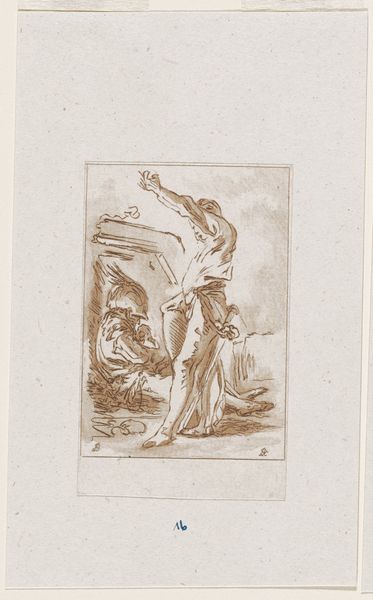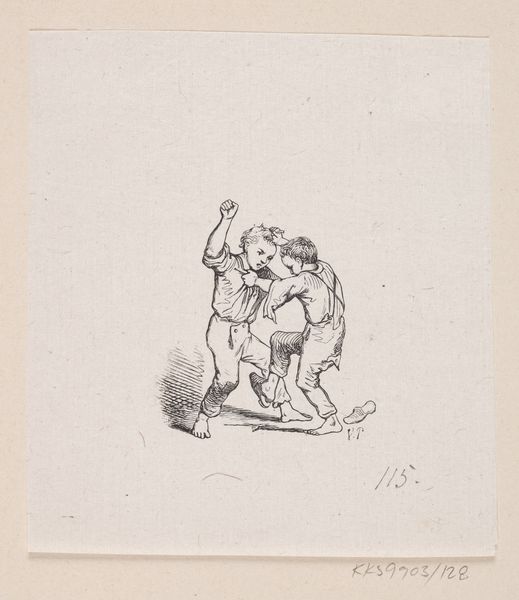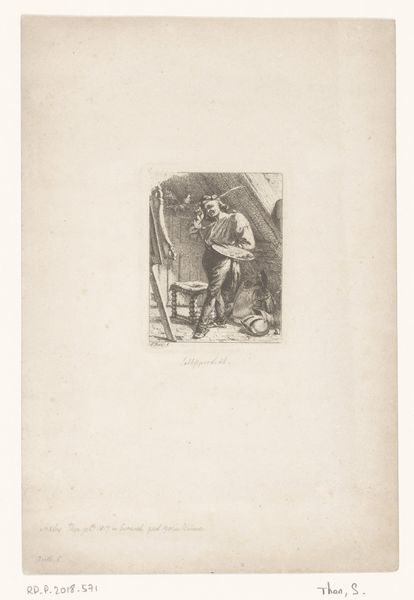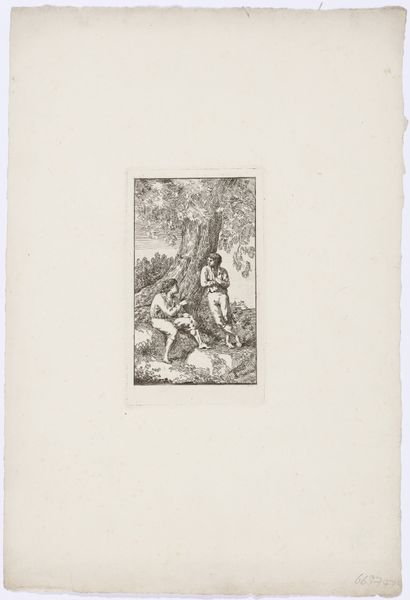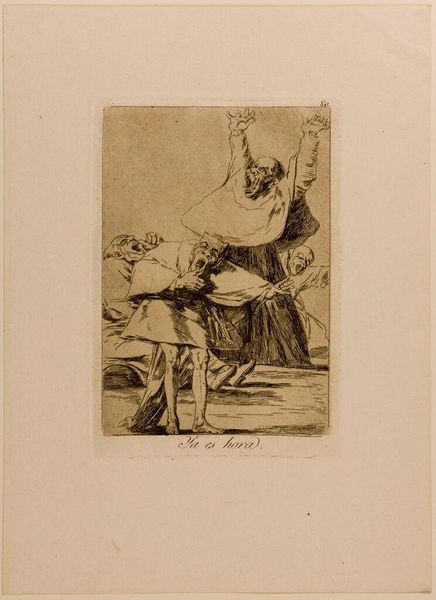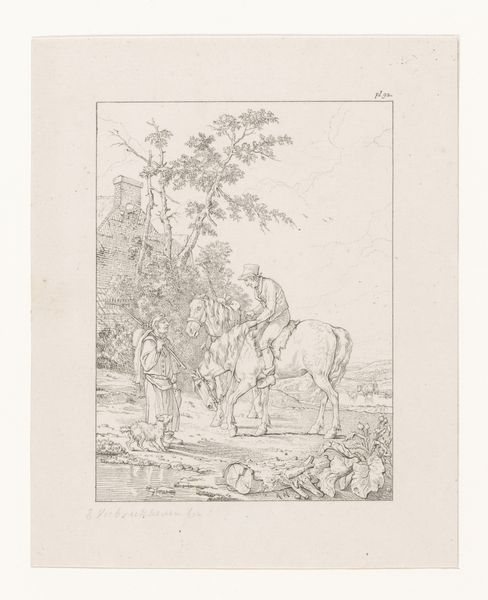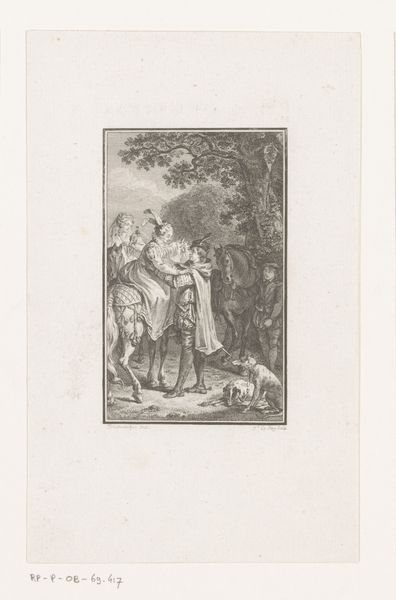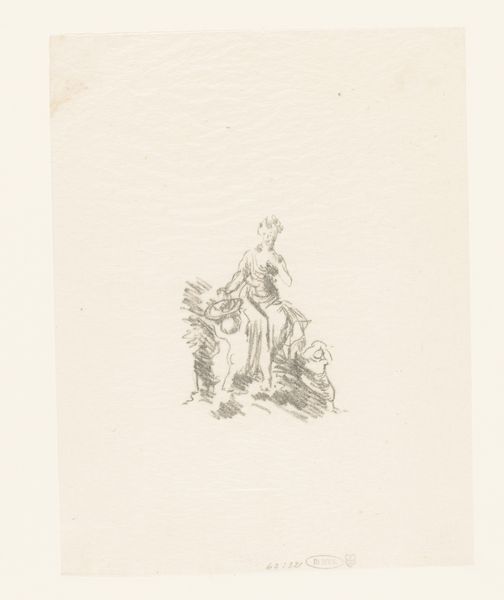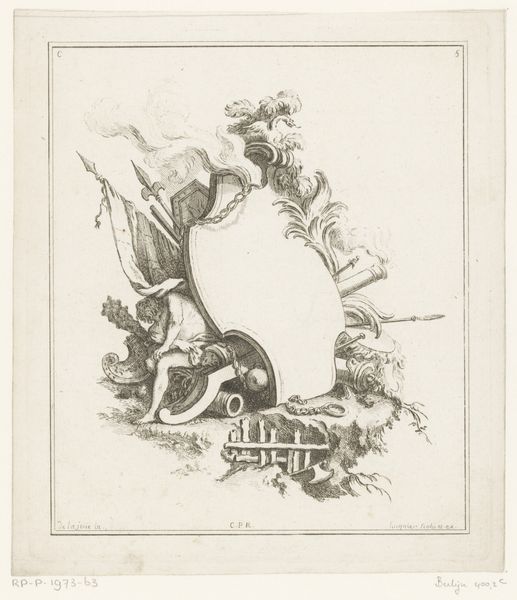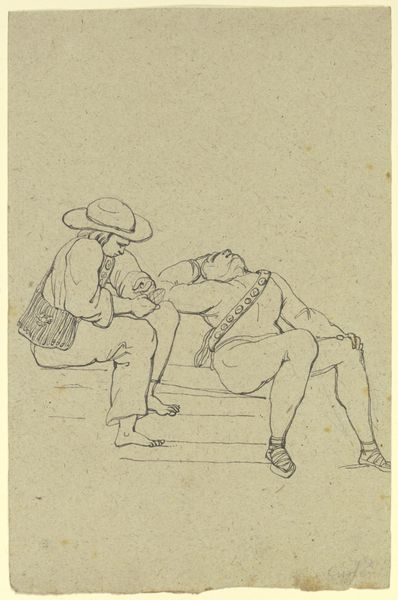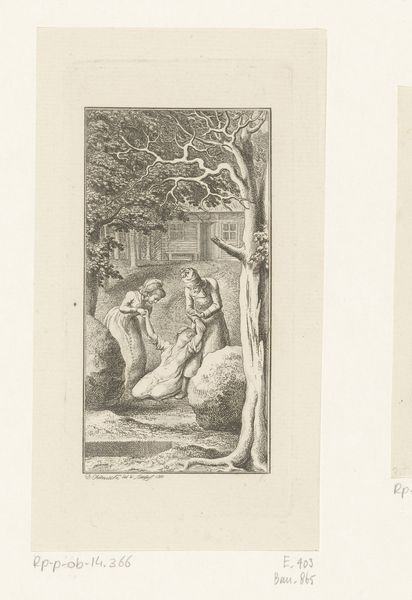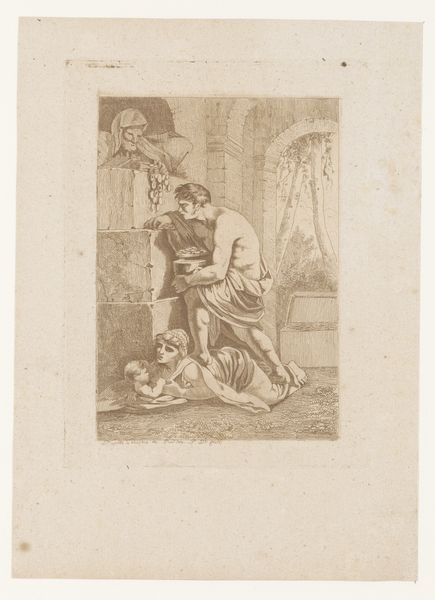
Dimensions: 3 1/4 x 2 3/8 in. (8.26 x 6.03 cm) (sheet, each, trimmed within platemark)
Copyright: Public Domain
Curator: Allow me to introduce Francois Philippe Charpentier’s “Suite de sept petits croquis,” a print dating back to 1766, now residing here at the Minneapolis Institute of Art. Editor: Immediately, I see a flurry of quick, expressive lines. The reddish-brown ink lends it an intimate, almost fleeting quality, like a glimpse into a private moment. It's quite baroque in its energy, don't you think? Curator: The Baroque is certainly evident in the dynamic composition, but also, considering the context, there’s a deliberate rendering of gender and social class that informs the narrative. Editor: Elaborate a bit. I’m seeing symbols and trying to unpack it! There's a definite hierarchy at play, isn't there? Someone elevated, interacting with people at lower positions… tell me more! Curator: Well, genre painting was very popular then, capturing everyday scenes, yes? And with Charpentier, we can consider how the representation of daily life intersects with broader societal power dynamics. Who is included, who is excluded? The choices the artist makes tells us something about societal norms of the period. For example, the attire of the central figure can represent power, privilege, social position. Editor: The central figure has what seems to be some head adornment which suggests someone important in society, a headdress usually signifies something of high status or importance in society. And those flowers by the podium– those could symbolize any number of things: beauty, fragility, the ephemeral nature of life itself, so often deployed as symbolism during the baroque period, right? The ephemeral nature of pleasure, perhaps. It also emphasizes an important sense of humanity of the subject represented, I think, when contrasted with those symbols that may embody power, such as dress. Curator: Indeed. The symbolism adds layers of meaning, but the real power lies in understanding how those meanings are constructed and reinforced by the artwork's place within its historical and cultural moment. How the print may have originally perpetuated then normalized a specific sociopolitical reality. Editor: It gives you pause to think doesn't it. To understand, analyze… how a visual language develops and how that shapes perceptions of reality. Art as an artifact of time... food for thought. Curator: Absolutely. A powerful way to comprehend our present, I feel, and even how to shape the future through new cultural representation.
Comments
No comments
Be the first to comment and join the conversation on the ultimate creative platform.
